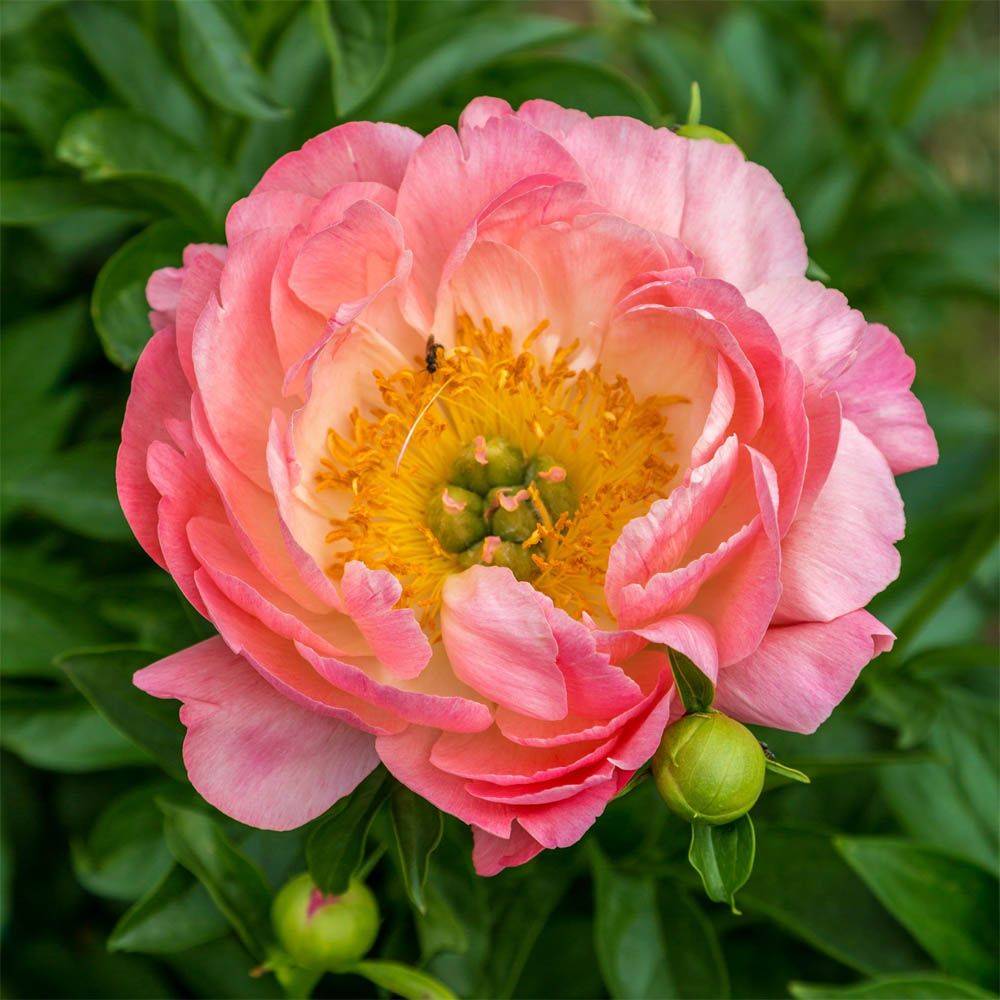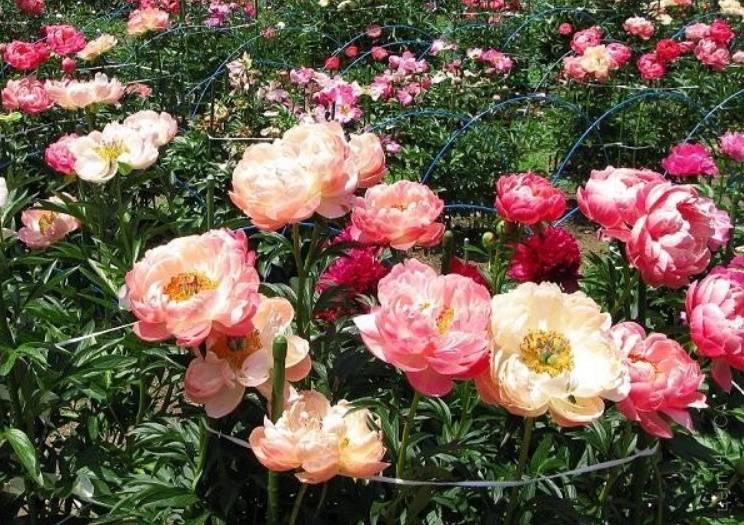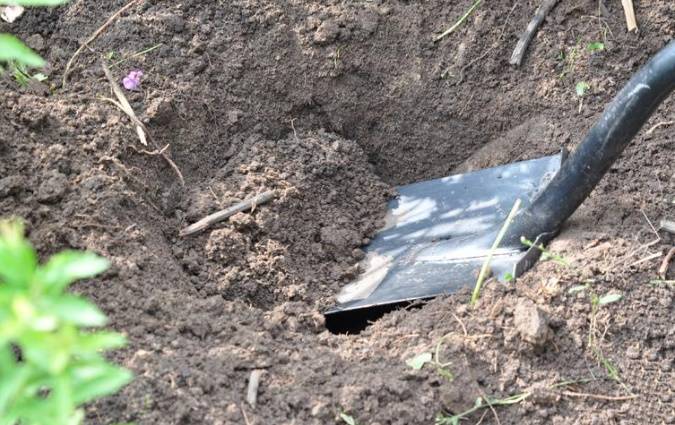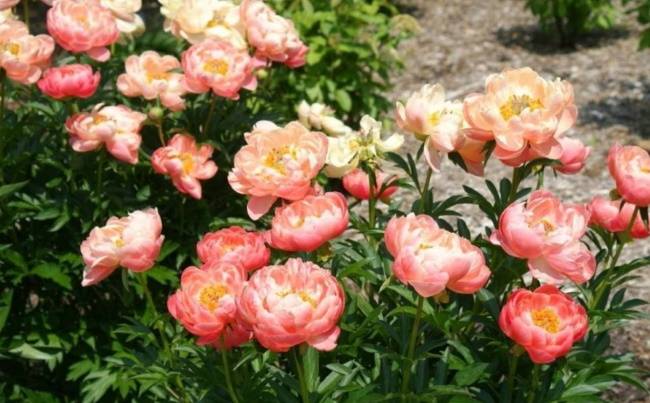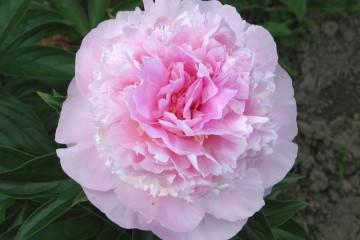Peony Pink Hawaiian Coral (Paeonia Pink Hawaiian Coral)
Content:
Semi-double herbaceous peonies with petals that change color during flowering look great from early spring to mid-summer. All connoisseurs of exquisite colors and aromas of these plants are sure that they will be the best decoration for the garden and flower garden. The group of these peonies includes Paeonia Pink Hawaiian Coral (Pink Hawaiian coral).
Description of peony Pink Hawaiian Coral
Frost-resistant peony Pink Hawaiian Coral was created by breeders from Holland. Awarded the American Peony Society (APS) Gold Medal. Its coral inflorescences change their shades twice during the flowering season. In early May, barely blossoming flower petals, collected in a semi-double cup-shaped inflorescence, can have a lilac-pink, bright pink-orange, almost crimson hue. On the inside of the petals, thin pink-white or dark-pink veins are visible.
As they bloom, the color range of the petals changes, they can become apricot or pale peach. In the center of the bud are bright yellow stamens and creamy pistils. Their appearance makes the flower even more elegant.
Height of 3-4-year-old plants is about 90 cm. Flowering is accompanied by a faint sweetish aroma of hay. Pink Hawaiian Coral milk-flowered peonies look especially impressive in group plantings. They are eagerly used to decorate ponds in home gardens, paths in parks and gardens, flower beds.
How to properly grow Pink Hawaiian Coral peony outdoors
Pink Hawaiian Coral peonies are perennial plants, whose surface part dies off in the winter. The root part of the bushes hibernates in the open field and tolerates quite severe frosts.
Every spring, the plants are reborn, then young green shoots appear, which are dressed in emerald shiny narrowed foliage, and then the buds are tied and blooming.
There are 2 ways to help plants not to lower their branches:
- put a ring on the bush, standing on long legs, sunk into the soil;
- in spring, before the germination of shoots, put a square the size of a bush made of a thick plastic mesh with large cells on top of the underground part of the peony, through which stem shoots will germinate. As the stems grow, the net is raised to the required height and reinforced with additional racks.
How to Plant Pink Hawaii Coral Peony
August is best suited for transplanting or rooting cuttings, although some gardeners also practice transplanting herbaceous peonies in spring. The growing area for Paeonia Pink Hawaiian Coral should be fertile land, prepared in advance for planting root cuttings.
In addition to bright sunlight, the plant needs loamy soil, into which organic fertilizers are applied during autumn planting - rotted manure, humus, vermicompost. Nothing should grow on the selected site in the summer.
A week before planting, you can start preparing the planting pit.Its size should not be too large, a depth of about 40-50 cm is enough, a width of 60 cm. 3-4 st. tablespoons of superphosphate and 1 glass of wood ash, sprinkle on top with a layer of garden soil removed from the same pit. Two days before planting the cuttings, the pit is filled with water with any fungicide dissolved in it. After the soil subsides, a small layer of dry earth is poured again.
Landing
On a bush intended for transplanting or for dividing into cuttings, all stems are shortened to a height of 10-15 cm. The peony bush extracted from the soil is left to dry the soil. The dried soil is removed, the rhizome is cut into pieces with a sharp garden knife. Each should have at least 3 growth buds. All parts of the roots must be healthy, free from rot or damage by insects or rodents.
The strips are immersed in a solution of any growth stimulator for 2-3 hours. For the early rooting of peonies, gardeners often use heteroauxin, root, epin, zircon that have been proven over the years. Then the pieces of rhizome should dry out for several hours. After that, you can start planting. Delenki are laid in a pit at an angle and covered with earth.
Peony bushes do not tolerate swampy and waterlogged areas; on such lands, flowers quickly die from root rot.
Seed planting
Most gardeners do not use seeds to propagate Paeonia Pink Hawaiian Coral. Seedlings obtained after seed germination do not have the qualities that are endowed with parent plants. But if, nevertheless, the task is to grow a seedling from seeds bearing a beautiful name, consonant with the Pacific coral island, then first you need to purchase high-quality seeds of these peonies and check their germination.
Then the seeds are treated with a fungicide or a simple pale pink potassium permanganate, washed in running water, dried and placed in flower pots with a soil substrate of neutral acidity, deepening 5 cm.This is done in August-September, about 30 days before the onset of cold weather. Pots for the winter are added in the garden. The seeds need to stay in the cold, preferably under snow or under mulch, for at least 2 months. In the spring, with the onset of warmth, the peony seeds should germinate.
Paeonia Pink Hawaiian Coral Care
In one place, without losing its decorative qualities, Pink Hawaiian Coral peony has been growing for at least 10 years. This is possible provided that the plant is planted in fertile soil, and then tended annually. Flower care is easy:
- in spring and autumn, mineral fertilizers are applied to the root zone under peony bushes - nitrogen fertilizers in spring, phosphorus in autumn. In summer, during flowering, fertilizing with a potassium-phosphorus complex is carried out once;
- throughout the season, make sure that the soil in the root zone does not dry out and does not become covered with a soil crust; so that there are no weeds next to the bushes that can drown out or shade plants;
- watering is carried out as the soil dries up to a depth of about 5 cm. Water for irrigation is taken from a spring or well. If there is a lot of mineral sediments in the water, it is defended, and they also do with tap water. It cannot be too cold or warm, the best option is room temperature;
- during flowering, crumbling inflorescences are cut from the bushes;
- in spring, flowers are treated with solutions of fungicides to prevent fungal diseases, in summer - with insecticides to destroy ants that bring aphids to buds.
Usually, plants that have lived in one place for more than 10 years slow down their growth, reduce the number of buds and the size of flowers. The reason for this is the root system of the peony that has gone deep into the ground.Despite their impressive size, the roots cannot supply nutrients to the upper part of the bush from the deep layers of the soil. The reason is that there are very few of them at great depths. The way out is to carry out in-depth fertilizing or to transplant a bush.
Preparation for wintering
With the beginning of the withering away of the surface parts of the peonies, the processes of accumulation of nutrients begin in the roots of flowers. The peony will need them in the spring, during the first growing season, and in winter to slowly feed the basal buds, which are practically on the soil surface. Buds are formed in the fall during the death of the stems. The blackened stems are cut off, leaving small stumps.
Although Paeonia Pink Hawaiian Coral is not afraid of severe frosts, gardeners usually do not take risks and cover the bushes with a layer of mulch or agrofibre. To prevent the flower from being drowned by rain and melt water, a raised frame is installed over the plant on top of the mulch and a layer of slate is laid.
Florists know that the peony bush will fully show its beauty only in the third year after planting, and the first two cut off all the buds so that the blossoming flowers do not take away the strength from the still underdeveloped roots. But when the time comes, and the Pink Hawaiian Coral peony blooms, they do not get tired of admiring its coral beauty and strive to ensure that more than one bush of this variety grows in the garden.
